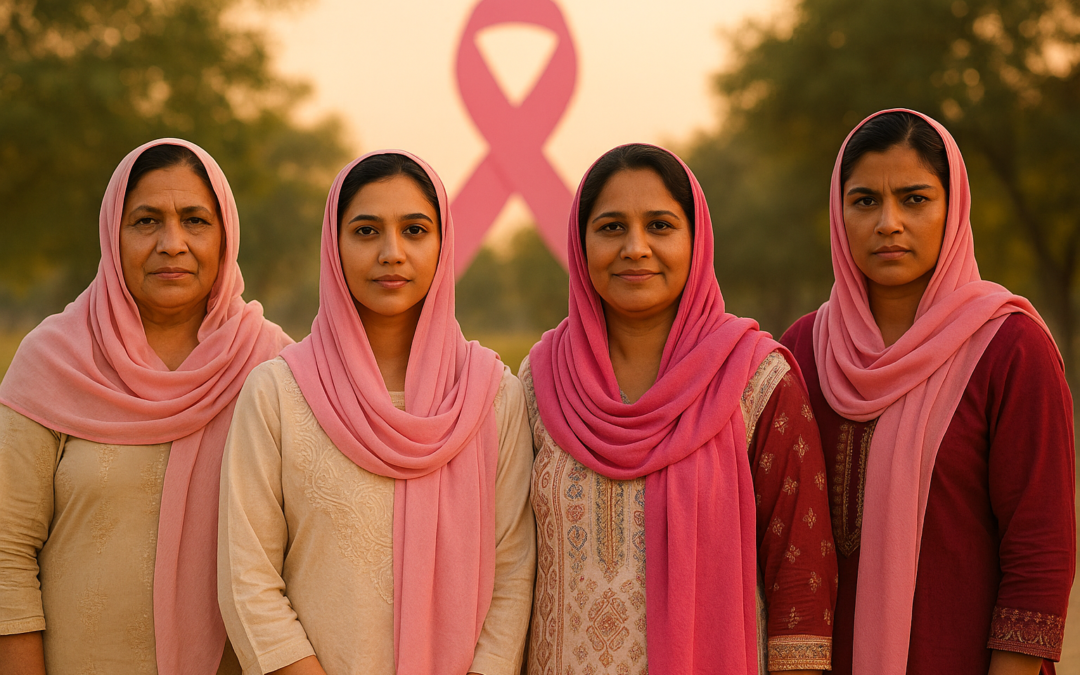In Pakistan, where conversations about women’s health are often limited by cultural taboos, breast cancer remains a deeply misunderstood disease. Misinformation, myths, and social stigma contribute to late diagnosis and unnecessary fear, preventing thousands of women from seeking timely help.
As part of Pink Ribbon Pakistan’s mission to raise awareness, it is essential to separate myths from facts. Here’s a look at some of the most common misconceptions about breast cancer in our society—and the truth behind them.
Myth 1: Breast cancer only affects older women
Fact: Although the risk increases with age, breast cancer can affect women as young as in their 20s or 30s. In Pakistan, we’re witnessing an increasing number of younger women being diagnosed—making awareness and early detection all the more critical.
Myth 2: Breast cancer is always hereditary
Fact: Only about 5–10% of breast cancer cases are inherited. Most women diagnosed with breast cancer have no family history of the disease. Lifestyle, environment, and hormonal factors can also play a significant role.
Myth 3: Wearing a tight bra or underwire bra causes breast cancer
Fact: There is no scientific evidence to support this. Bras do not restrict lymph flow or increase cancer risk. This myth distracts from real risk factors like obesity, smoking, or lack of physical activity.
Myth 4: Using deodorants or antiperspirants causes breast cancer
Fact: This widely circulated myth has no clinical support. There is no proven link between breast cancer and the use of deodorants or antiperspirants, even though many believe that chemicals are absorbed through the skin.
Myth 5: Prayers and alternative healing are enough to cure breast cancer
Fact: Faith and spirituality are important, but medical treatment is essential. Delaying chemotherapy, surgery, or radiation for spiritual healing can lead to disease progression and worsen outcomes. Islam encourages seeking proper medical care.
Myth 6: Talking about breast cancer is shameful or inappropriate
Fact: Silence kills. Avoiding discussion leads to ignorance, stigma, and late diagnoses. It’s time we normalize conversations around breast health in homes, schools, and media—especially in a country where 1 in 9 women is at risk.
Myth 7: Breastfeeding completely protects you from breast cancer
Fact: Breastfeeding does lower the risk, especially when continued for over a year. However, it doesn’t make women immune. Women who breastfeed still need regular check-ups and self-examinations.
Myth 8: A lump in the breast always means cancer
Fact: Not all lumps are cancerous—many are benign (non-cancerous). But any unusual change should be examined by a doctor immediately. Early diagnosis saves lives, regardless of whether it’s benign or malignant.
Why Busting Myths Matters
Misinformation is deadly. When women delay seeking help because of myths, the cancer is often diagnosed at a late stage, reducing survival rates. By spreading accurate information, we can empower women to protect themselves, seek early diagnosis, and access life-saving treatment.
What You Can Do
-
Educate yourself and others—especially young girls and rural women.
-
Encourage open conversations about breast health in your home.
-
Share this blog to help fight stigma and misinformation.
-
Support awareness programs by organizations like Pink Ribbon Pakistan.


